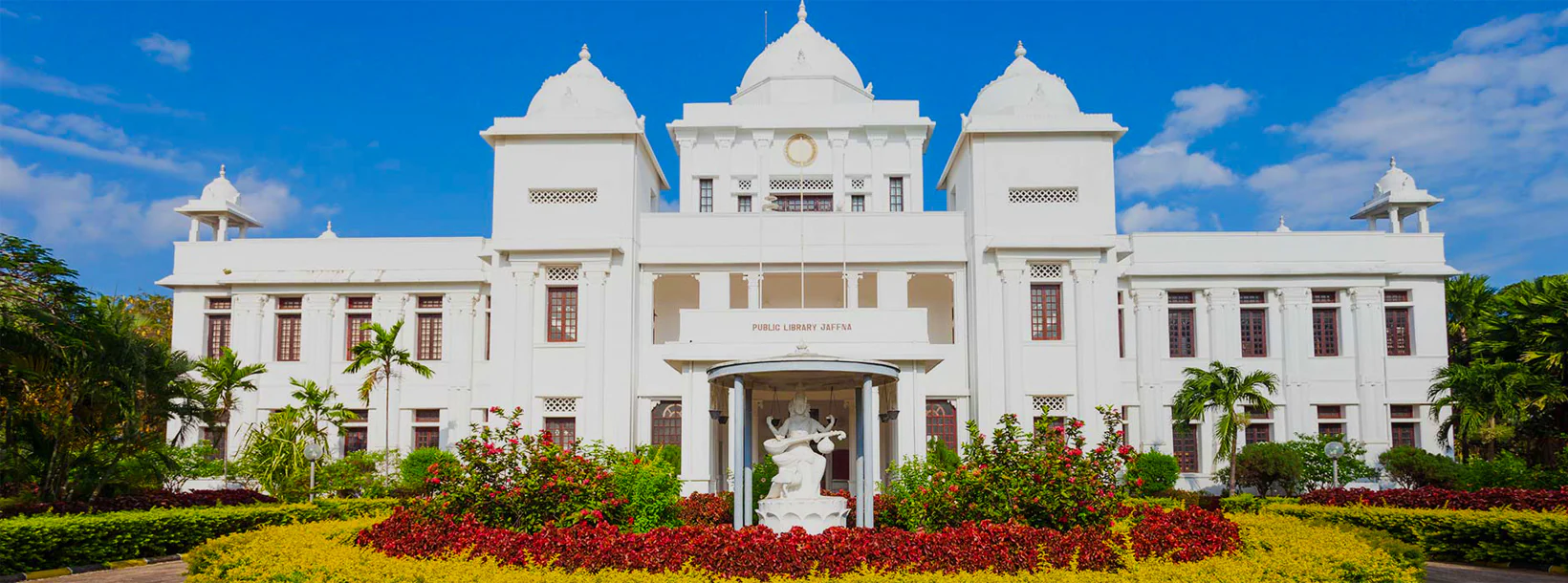
Jaffna City
Jaffna is the main city of Jaffna peninsula in the northernmost district of Sri Lanka. Comfortable intercity busses from Colombo take 10-12 hours to reach the city of Jaffna.
Jaffna-Strand
Jaffna Beach im Norden Sri Lankas bietet ein einzigartiges und ruhiges Küstenerlebnis. Bekannt für seine unberührte Naturschönheit und sein reiches kulturelles Erbe, ist Jaffna Beach ein verstecktes Juwel, das Reisenden, die ein Reiseziel abseits der ausgetretenen Pfade suchen, einen authentischen und ruhigen Rückzugsort bietet.
Unberührte und abgelegene Strände
Jaffna Beach besticht durch unberührte, goldene Sandstrände und klares, ruhiges Wasser. Im Vergleich zu anderen beliebten Stränden Sri Lankas sind die Strände weniger überlaufen und bieten eine ruhige Umgebung zum Schwimmen, Sonnenbaden und für gemütliche Spaziergänge entlang der Küste.
Kulturelle und historische Bedeutung
Die Region Jaffna ist reich an tamilischer Kultur und Geschichte. Besucher können das lokale Erbe anhand der alten Tempel, der Kolonialarchitektur und der lebhaften Märkte erkunden. Zu den wichtigsten Sehenswürdigkeiten zählen der Nallur-Kandaswamy-Tempel und das Jaffna-Fort , die Einblicke in die historische und kulturelle Bedeutung der Region bieten.
Inselhüpfen
Die Jaffna-Halbinsel beherbergt mehrere kleine Inseln, jede mit ihrem ganz eigenen Charme. Kayts Island und Delft Island sind beliebte Ziele für Inselhopping, wo Besucher wunderschöne Strände, historische Ruinen und traditionelle Dörfer erkunden können. Delft Island ist insbesondere für seine Wildponys und alten niederländischen Befestigungsanlagen bekannt.
Meeresfrüchte und lokale Küche
Jaffna ist bekannt für seine schmackhafte tamilische Küche mit Schwerpunkt auf frischen Meeresfrüchten. Zu den lokalen Spezialitäten gehören Jaffna-Krabbencurry, Fischcurry und String Hoppers . Die Küche der Region bietet einen einzigartigen Einblick in die kulinarischen Traditionen Sri Lankas mit würzigen und aromatischen Gerichten, die die lokale Kultur widerspiegeln.
Traditionelle Fischerdörfer
Die Gegend um Jaffna Beach ist übersät mit traditionellen Fischerdörfern. Besucher können die lokalen Fischereipraktiken erleben, mit den Fischern interagieren und das tägliche Leben in diesen Küstengemeinden beobachten. Die Fischerdörfer bieten einen Einblick in die traditionellen Lebensgrundlagen der Region.
Tierwelt und Natur
Jaffna ist auch für seine Naturschönheiten und seine Tierwelt bekannt. Die Jaffna-Lagune und die umliegenden Feuchtgebiete bieten Lebensraum für verschiedene Vogelarten und eignen sich ideal zur Vogelbeobachtung. Die Mangroven und Küstenökosysteme der Region tragen zu ihrer reichen Artenvielfalt bei.
Beste Reisezeit:
Die beste Reisezeit für Jaffna Beach ist von Mai bis September . Dann ist das Wetter relativ trocken und warm und eignet sich ideal für Strandaktivitäten und die Erkundung der lokalen Sehenswürdigkeiten. Das Klima in der Region kann recht heiß und feucht sein, daher bietet diese Zeit angenehmere Reisebedingungen.
About Jaffna District
Jaffna is the capital city of the Northern Province, Sri Lanka. 85% of the populations of the Jaffna and Kilinochchi districts are Hindus. The Hindus follow the Saivite tradition. The remainders are largely Roman Catholics or Protestants, some of whom are descendants of colonial settlers, known as Burghers. The Tamils are divided along caste lines, with the farmer-caste Vellalar forming the majority. Sea products, red onion, and tobacco are the main products in Jaffna.
Jaffna is home to beautiful Hindu temples. An Old Dutch Fort still stands well preserved within which is an old Church. Another example of Dutch architecture is the King's House. No visit to Jaffna is complete without tasting the exquisite Jaffna mango, reputed for its sweetness. About 3 km away is the majestic Nallur Kandaswamy Temple, home to the largest religious festival in Jaffna. The Kayts Harbour is an ancient ship docking site in the Jaffna region.
About Northern Province
The Northern Province is one of the 9 provinces of Sri Lanka. The provinces have existed since the 19th century but they didn't have any legal status until 1987 when the 13th Amendment to the 1978 Constitution of Sri Lanka established provincial councils. Between 1988 and 2006 the province was temporarily merged with the Eastern Province to form the North-East Province. The capital of the province is Jaffna.
Northern Province is located in the north of Sri Lanka and is just 22 miles (35 km) from India. The province is surrounded by the Gulf of Mannar and Palk Bay to the west, Palk Strait to the north, the Bay of Bengal to the east and the Eastern, North Central and North Western provinces to the south.The province has a number of lagoons, the largest being Jaffna Lagoon, Nanthi Kadal, Chundikkulam Lagoon, Vadamarachchi Lagoon, Uppu Aru Lagoon, Kokkilai lagoon, Nai Aru Lagoon and Chalai Lagoon.Most of the islands around Sri Lanka are to be found to the west of the Northern Province. The largest islands are: Kayts, Neduntivu, Karaitivu, Pungudutivu and Mandativu.
The Northern Province's population was 1,311,776 in 2007. The majority of the populations are Sri Lankan Tamils, with a minority Sri Lankan Moor and Sinhalese population. Sri Lankan Tamil is the major language spoken in the province by the vast majority of the population. The other language spoken is Sinhala by 1 percent of the population. English is widely spoken and understood in the cities.














